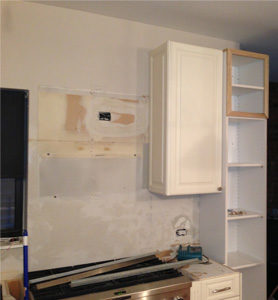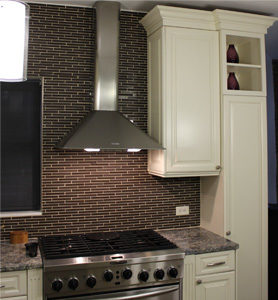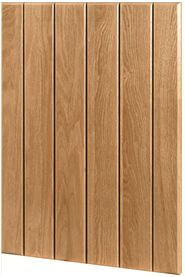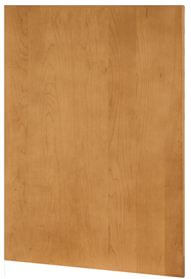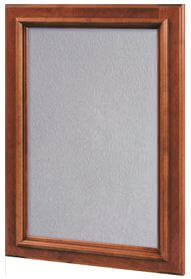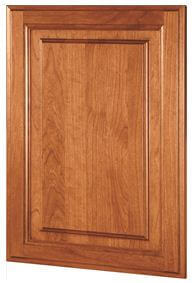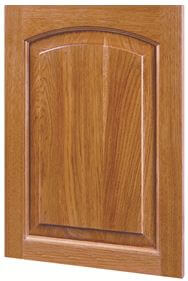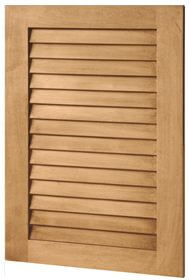In the beginning there was wood. And it was good for thousands of years and it still is. For some people there’s nothing better than a butcher block counter top in at least part of their kitchen. It’s warm, beautiful, can be used to knead dough or cut meat and vegetables. They do require maintenance. You have to keep them really clean, which might require some scraping or sanding, and you have to season the butcher block with a food safe oil like mineral oil..
And then in 1912, two engineers working for Westinghouse invented laminate. And they named it Formica. They immediately left the company and presumably got very rich. This much maligned material is familiar to everyone and wanted by no one. It’s the least expensive countertop and is easy to clean. Its worst feature is that it is very heat sensitive, so it’s relatively easy to ruin.
Stainless steel made the jump from restaurant kitchens to homes in the 1960s and is again somewhat popular. The good; no need to worry about heat or food stains. The bad; it’s easy to scratch and dent so either you don’t mind that look or you have to be very careful.
Sometimes you will see tile counter tops. I hate these because I think they’re ugly, the tile can chip, and the grout between the tiles easily stains and can mildew, even if it’s sealed.
Starting in the 1960s granite was the most desirable counter top material.. While its reign as the champion of counter tops is over, there’s a lot to like about it. It’s very durable, hard to stain, easy to maintain and can withstand heat.. Nowadays there are signs on the side of the street promoting granite at $24 a square foot (not accurate because they charge extra for every cut), so granite is seen today as a low end commodity by lots of homeowners. But there are good reasons it was the most desired material for fifty years.
About ten years ago designers started using marble in the kitchen . There’s no doubt that there are some stunning marbles. Colors like Calcutta Gold and Statuary, with lots of white and distinctive veining, command premium prices. I’ve used it in four homes that sold for well over a million dollars each. My theory is that the more people pay for a house, the less cooking they do. I say that because marble is soft and permeable, so it’s easy to chip or stain and almost impossible to remove the stains. Don’t put your water glass on your new marble counters!
Of all the choices, people are most confused by quartz. It’s a man made material, but it’s made from 93% quartz, a natural mineral. People who like it praise its low maintenance- it doesn’t require any sealing like natural stone does- and they like the fact that the color usually goes all the way through the material.. Because it’s manmade, what you see is what you get, there’s no variation in the look of the material between the sample you see and the delivery you get. People who don’t like it point out that it can chip more easily than granite and that it doesn’t look natural. To make things more confusing, there are dozens of quartz manufacturers, with conflicting marketing claims. Some of the better known brands are Zodiaq, Cambria, Caesarstone, and Silestone.
Concrete has moved out of your driveway and in to your kitchen. A few years ago there was lots of hype in the trade magazines about concrete counters, but I think it will always have a very limited market. A good installer can dye or texture your counters to give them almost any look. That’s the good news. The bad news is that you are really at the mercy of your installer because everything depends on the quality of your installation. Also, concrete tends to crack over time and it needs to be sealed. The penetrating sealers that are needed to provide heat resistance have to be reapplied regularly. A material that’s not for everyone.
By far the best known solid surface counter top is Corian. This was considered a premium counter top material in the seventies and eighties. I could say enough said, but I won’t. Corian, I think, is really much better in the bathroom than the kitchen because it can be made with a seamless appearance. For kitchens the good news is that, until you get to the wood core, the solid surface material is the same color thoughout and requires no maintenance. The bad news is that it’s not heat resistant and it’s been my experience that it discolors over time.
Porcelain counter tops are quite popular in Europe, but rarely used here. These are basically a very thin layer of porcelain veneer over a sandwich of fiberglass, MDF, and wood. They are lightweight and offer lots of looks and colors. But they are easy to break when installing them and difficult to find. I only know of one distributor in Chicago and they bring them in from Europe.
I didn’t mention glass, bamboo, recycled glass, lava stone, and recycled countertops. These are such a small part of the market that they don’t warrant devoting space to them, but they might appeal to you.
